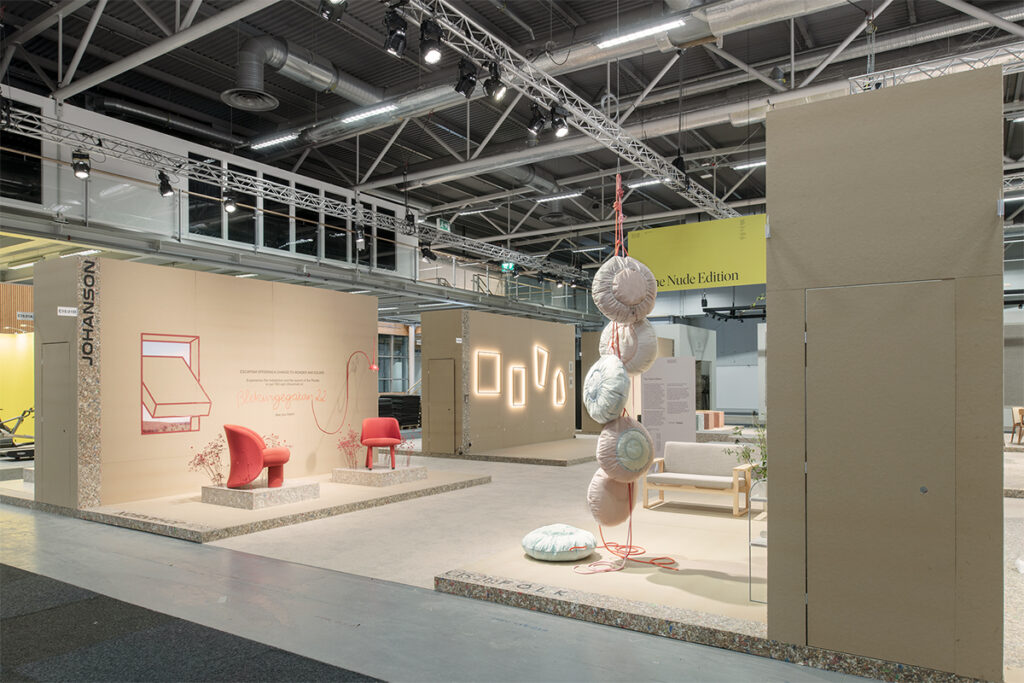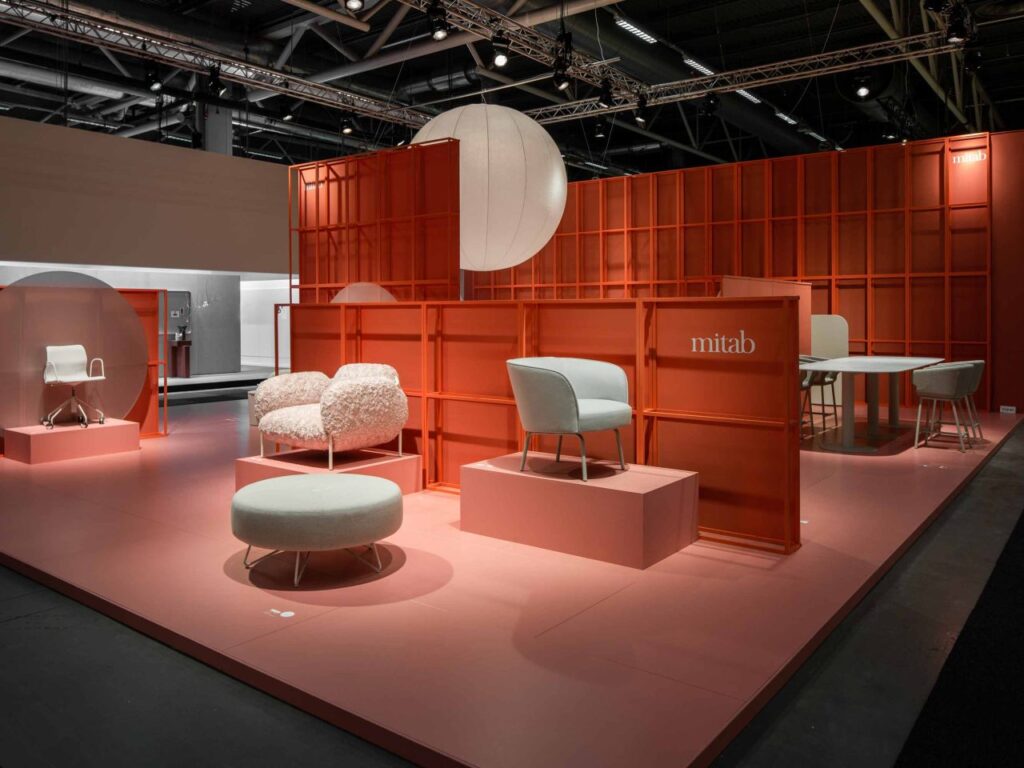The Stockholm Furniture Fair 2024, held in the heart of Sweden’s capital city, showcased the latest trends and innovations in the furniture industry. This annual event brought together designers, manufacturers, and consumers to explore the future of furniture design. Two key themes that dominated the fair were sustainability and smart homes.
In recent years, there has been a growing awareness of the environmental impact of traditional furniture production methods. As a result, sustainability has become a top priority for many designers and manufacturers. The use of eco-friendly materials and production processes is not only beneficial for the planet but also appeals to environmentally conscious consumers.
Alongside sustainability, smart homes have emerged as a significant trend in interior design. With advancements in technology, homeowners are increasingly seeking ways to integrate smart devices into their living spaces. From voice-controlled lighting systems to automated temperature control, these innovations offer convenience and efficiency.
Summary
Sustainable design was a major focus at Stockholm Furniture Fair 2024.
The fair showcased key trends and innovations in smart home technology.
Circular economy and upcycling were highlighted as important for sustainable materials and production.
The future of home automation is all about smart devices and integrated systems.
Smart homes are being designed with a focus on enhancing our health and wellbeing.
Sustainable Design Takes Center Stage at Stockholm Furniture Fair 2024
At Stockholm Furniture Fair 2024, sustainable design was at the forefront of many exhibitors’ showcases. Designers demonstrated their commitment to reducing their carbon footprint by utilizing sustainable materials such as reclaimed wood or recycled plastic in their creations.
One notable highlight was a collection by an up-and-coming Swedish brand that specialized in using repurposed materials for its furniture pieces. Their chairs were crafted from discarded fishing nets collected from coastal areas around Sweden’s archipelagoes—a creative way to transform waste into functional art pieces.
Another brand showcased innovative manufacturing techniques that minimized waste during production processes while maintaining high-quality standards. By utilizing computer-aided design (CAD) software and precision cutting machines, they were able to optimize material usage without compromising on aesthetics or durability.
The Rise of Smart Homes: Key Trends and Innovations at the Fair
The Stockholm Furniture Fair 2024 also provided insights into how smart home technologies are revolutionizing interior design concepts worldwide. Exhibitors showcased a wide range of smart home devices that seamlessly integrated into furniture pieces, making homes more efficient and convenient.
One standout example was a coffee table equipped with wireless charging capabilities. This innovative piece allowed users to charge their smartphones simply by placing them on the table’s surface, eliminating the need for messy cables and adapters. Additionally, the table featured built-in speakers that could be connected to various audio devices via Bluetooth technology.
Another exciting innovation was a sofa with integrated sensors that monitored body temperature and heart rate. This data was then analyzed by an accompanying smartphone app, which provided personalized recommendations for improving sleep quality and overall well-being. The sofa also had adjustable lumbar support and massage functions, further enhancing its wellness benefits.
Circular Economy and Upcycling: A Focus on Sustainable Materials and Production
In line with the sustainability theme at Stockholm Furniture Fair 2024, many exhibitors emphasized their commitment to circular economy principles and upcycling in furniture design. The concept of circular economy revolves around minimizing waste by reusing or repurposing materials throughout their lifecycle.
Several furniture brands showcased products made from recycled materials such as plastic bottles or discarded textiles. By transforming these waste materials into new furniture pieces, they not only reduced environmental impact but also created unique designs that added character to any space.
Additionally, upcycling played a significant role in promoting sustainability at the fair. Designers demonstrated how old or damaged furniture could be transformed into functional pieces through creative refurbishment techniques. For instance, an old wooden door was repurposed into a stylish dining table by adding sturdy legs and refinishing its surface—a testament to the endless possibilities of upcycling in furniture design.
The Future of Home Automation: Smart Devices and Integrated Systems
As technology continues to advance rapidly, so does the future of home automation. At Stockholm Furniture Fair 2024, exhibitors showcased cutting-edge smart devices designed specifically for integration within furniture pieces. These devices aimed to enhance the functionality and convenience of modern homes.
One notable example was a smart mirror that featured built-in LED lighting and touch-screen controls. This multifunctional piece allowed users to adjust lighting intensity, play music, and even receive weather updates—all while getting ready in front of the mirror. The integration of these features into a commonly used household item demonstrated the potential for smart technologies to seamlessly blend into our daily lives.
Another exciting innovation was a bed frame equipped with sensors that monitored sleep patterns and adjusted mattress firmness accordingly. By analyzing data such as heart rate variability and body movement during sleep, this intelligent bed ensured optimal comfort throughout the night, promoting better sleep quality.
Designing for Wellness: How Smart Homes are Enhancing Our Health and Wellbeing
In addition to convenience, smart homes have also been recognized for their potential to enhance our health and wellbeing. At Stockholm Furniture Fair 2024, designers showcased furniture pieces specifically designed with wellness in mind.
One standout example was an ergonomic office chair that incorporated posture-correcting technology. Equipped with sensors embedded within its structure, this chair provided real-time feedback on sitting posture through an accompanying smartphone app. By encouraging proper alignment, it aimed to reduce back pain caused by prolonged sitting—a common issue faced by many office workers.
Another innovative design focused on indoor air quality—a crucial aspect of overall well-being. A side table integrated an air purifier system that effectively removed pollutants from the surrounding environment while doubling as a functional storage unit or display surface.
The Stockholm Furniture Fair 2024 showcased the latest trends in sustainable design and smart home technologies within the furniture industry. The emphasis on sustainability highlighted designers’ commitment to reducing environmental impact through eco-friendly materials and production processes.
Simultaneously, exhibitors demonstrated how integrating smart home technologies into furniture pieces could enhance convenience, efficiency, health, and overall well-being for homeowners worldwide.
As consumers, it is essential to prioritize sustainability and smart home technologies when making furniture choices. By supporting brands that embrace these principles, we can contribute to a more sustainable future while enjoying the benefits of a connected and efficient living space.

